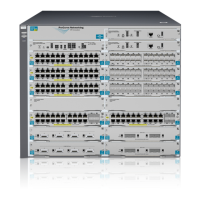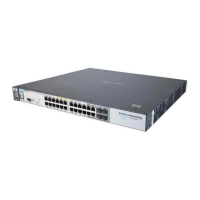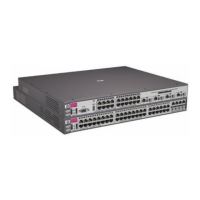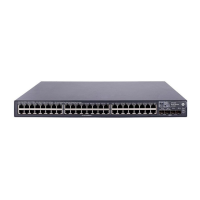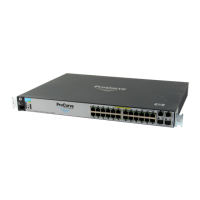2-3
Installing the Switch
Installation Procedures
Installation Procedures
Summary
1. Prepare the installation site (page 2-5). Ensure the physical environ-
ment is properly prepared, including having the correct network cabling
ready to connect to the switch and having an appropriate location for the
switch. See page 2-4 for some installation precautions.
2. Verify the switch passes self test (page 2-5). Plug the switch into a
power source and observe that the LEDs on the switch’s front panel
indicate correct switch operation. When self test is complete, unplug the
switch.
3. (Optional) Install or remove a yl module (page 2-8).
4. Mount the switch (page 2-10). The Switch can be mounted in a 19-inch
telco rack, in an equipment cabinet, or on a horizontal surface.
5. (Optional) Install or remove a transceiver ((page 2-12). If you have
installed a yl module, you can now install one or two transceivers.
6. (O pt i o na l ) I n s t al l o r r e m o v e m in i - G BI C s or S F P / S FP + t ra n s ce i v e r s
(page 2-13). The switch has four slots for installing mini-GBICs and two
slots in the J9312A module. Depending on where the switch is mounted,
it may be easier to install the mini-GBICs first. Mini-GBICs, SFP/SFP+
transceivers can be installed or removed while the switch is powered on.
7. Connect the switch to a power source (page 2-15). Once the switch is
mounted, plug it into the nearby main power source.
8. (Optional) Connect an External Power Supply (page 2-15). You may
wish to use an external power supply with the switch. To do so you must
connect the external power supply using the RPS or EPS cables supplied
with the external power supply.
9. (Optional) Connect a console to the switch (page 2-21). You may wish
to modify the switch’s configuration, for example, to configure an IP
address so it can be managed using a web browser, from an SNMP network
management station, or through a Telnet session. Configuration changes
can be made easily by using the included console cable to connect a PC
to the switch’s console port.
10. Connect the network cables (page 2-23). Using the appropriate
network cables, connect the network devices to the switch ports.
At this point, the switch is fully installed. See the rest of this chapter if you
need more detailed information on any of these installation steps.

